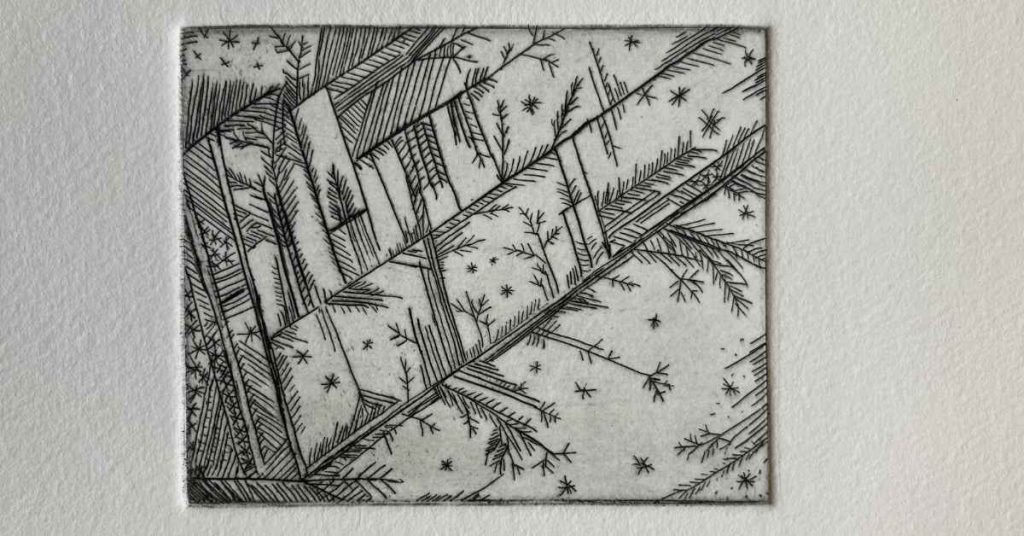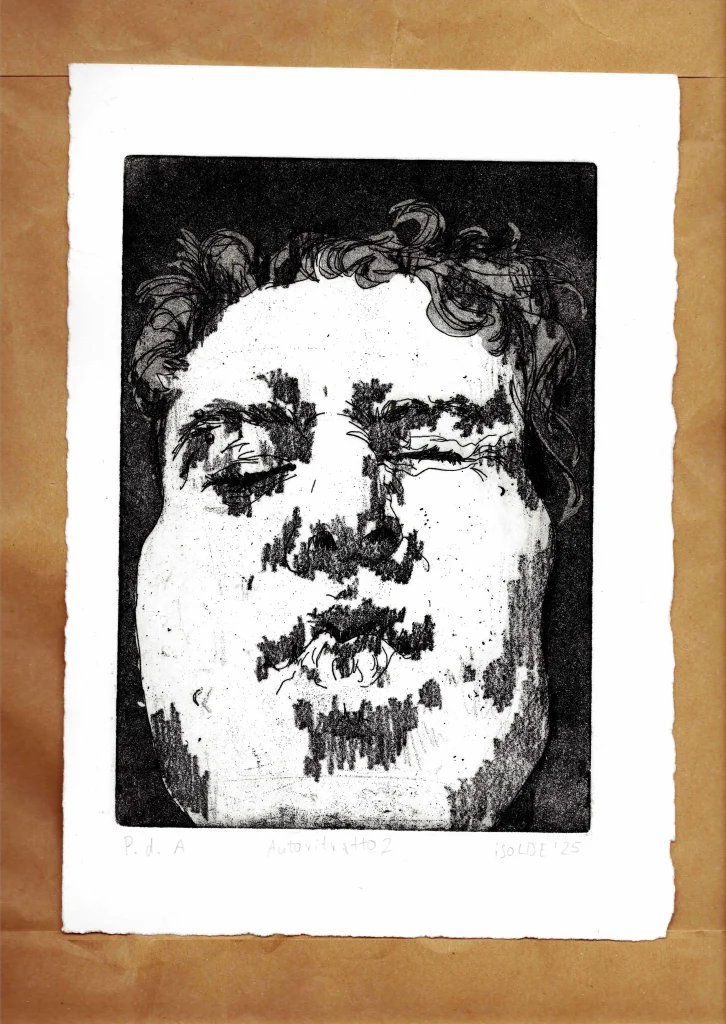This is the second part of the intaglio printing series. On the first part we talked about what is intaglio printing, it’s history, and why both enthusiasts and buyers love intaglio printing works.

In this article, you’ll find out the techniques that bring intaglio printing to life.
Intaglio isn’t just one method—it’s an entire family of techniques, each offering unique textures, tonal qualities, and artistic effects. Whether you’re aiming for sharp, intricate linework or soft, painterly shadows, choosing the right intaglio technique is the key to achieving your artistic vision.
In this section, we’ll cover:
✅ The six major intaglio techniques and how they work.
✅ How each method creates distinct textures & effects.
✅ Which technique best suits different artistic styles.
By the end, you’ll have a clear understanding of how to choose—or even combine—these techniques to craft prints with depth, richness, and detail.
Let’s dive in! 🎨✨
🔹 The Six Major Intaglio Techniques
Each intaglio technique is defined by how the design is created on the plate. Some involve direct hand engraving, while others rely on chemical etching or experimental approaches to achieve specific effects.
Here’s a breakdown of the six major techniques used in intaglio printmaking:
1️⃣ Engraving: The Sharpest & Most Precise Intaglio Method
What It Is:
Engraving is the purest form of intaglio printing, where the artist carves directly into a metal plate using a sharp tool called a burin.
How It Works:
✔ The artist incises deep grooves into the metal, varying pressure and angle to control line thickness.
✔ Ink is applied and wiped clean, leaving ink only in the engraved grooves.
✔ The plate is pressed against damp paper, transferring the design with crisp, high-contrast lines.
🔥 Best For:
✔ Highly detailed illustrations (portraits, maps, historical prints).
✔ Luxury engraving (banknotes, watch dials, jewelry patterns).
🎨 Famous Examples:
• The U.S. dollar bill—all those intricate fine lines are engraved by hand!
• Albrecht Dürer’s masterful engravings from the 1500s.
📌 Pro Tip: Engraving is technically demanding—one slip of the burin, and there’s no erasing your mistake!
2️⃣ Etching: Where Art Meets Chemistry
What It Is:
Etching uses acid to carve designs into metal, allowing for more fluid, expressive lines compared to engraving. This method is perfect for artists who enjoy a sketch-like, spontaneous style.
How It Works:
✔ The metal plate is coated with an acid-resistant ground (a wax-like layer).
✔ The artist draws into the ground with an etching needle, exposing the metal underneath.
✔ The plate is placed in acid, which bites into the exposed areas, creating grooves.
✔ The longer the exposure, the darker and deeper the lines.
🔥 Best For:
✔ Artists who prefer fluid, expressive linework.
✔ Creating fine details without the physical effort of engraving.
🎨 Famous Examples:
• Rembrandt’s etchings—he mastered depth and contrast by adjusting acid exposure times.
• Francisco Goya’s “Los Caprichos”—a hauntingly beautiful series of satirical prints.
📌 Pro Tip: The longer the plate sits in acid, the deeper the etch—so you can control shading and contrast by varying exposure times!
3️⃣ Drypoint: The Raw & Expressive Scratch Technique
What It Is:
Drypoint is an intensely raw and textured technique where the artist scratches directly into a metal plate with a needle. Unlike engraving, drypoint creates a burr—a small ridge of displaced metal that holds extra ink, resulting in soft, velvety lines.
How It Works:
✔ The artist scratches directly onto a metal plate using a metal or diamond-tipped needle.
✔ Ink is applied and wiped, but the burr traps extra ink, creating rich, textured lines.
✔ Burrs wear down quickly, so only a limited number of high-quality prints can be made.
🔥 Best For:
✔ Expressive, organic linework—great for sketch-like compositions.
✔ Limited edition fine art prints due to the fragility of burrs.
🎨 Famous Examples:
• Mary Cassatt’s drypoint portraits—capturing delicate emotions with rich textures.
• Whistler’s cityscape etchings, where drypoint added atmospheric depth.
📌 Pro Tip: Drypoint burrs wear down quickly, so artists typically print fewer than 10 copies per plate!
4️⃣ Mezzotint: The Ultimate Shading Technique
What It Is:
Mezzotint is unique because it starts with a fully dark plate—instead of carving lines, the artist works backward by smoothing areas to create lighter tones.
How It Works:
✔ The plate is roughened with a mezzotint rocker, creating a texture that holds ink.
✔ The artist smooths areas to create highlights.
✔ The result is a soft, painterly effect—perfect for deep shadows and dramatic lighting.
🔥 Best For:
✔ Highly detailed, tonal compositions.
✔ Realistic portraits and atmospheric depth.
🎨 Famous Examples:
• John Martin’s dramatic mezzotint landscapes.
• 18th-century portrait engravings, which were almost always done in mezzotint.
📌 Pro Tip: Mezzotint is one of the most time-consuming intaglio techniques—but the results are breathtaking!
5️⃣ Aquatint: The Painter’s Intaglio Technique
What It Is:
Aquatint is similar to etching, but instead of lines, it’s used to create smooth, tonal shading—perfect for soft, watercolor-like effects.

How It Works:
✔ The plate is coated with fine rosin powder.
✔ When placed in acid, the acid bites around the tiny grains, creating a subtle, textured tone.
✔ Artists control exposure time to achieve smooth gradients.
🔥 Best For:
✔ Soft, painterly effects—ideal for comic-style or atmospheric backgrounds.
✔ Artists who want gradual tonal transitions in their prints.
🎨 Famous Examples:
• Francisco Goya’s haunting aquatint prints.
• Modern artists who mix etching with aquatint for deeper contrast.
📌 Pro Tip: Combining aquatint with line etching allows artists to blend sharp details with rich shading in one print!
6️⃣ Photogravure: The Fusion of Photography and Intaglio
What It Is:
Photogravure intaglio printing is the process of printing a photographic image onto a metal plate. Then the artist ink the mental plate and make a print out of it like a traditional intaglio print.
It allows the artists to create rich, high-detail prints with deep tonal range. Unlike etching or engraving, which rely on hand-drawn lines, photogravure transfers photographic images onto metal plates for printing.
How It Works:
✔ A copper plate is coated with a light-sensitive gelatin layer.
✔ A photographic film positive is placed on the plate and exposed to UV light, hardening areas of the gelatin.
✔ The plate is submerged in an acid bath, which bites into the exposed areas, creating an etched image.
✔ The plate is inked and wiped, then printed onto damp fine-art paper using an etching press.
🔥 Best For:
✔ Fine art photography, where rich blacks, soft grays, and intricate details matter.
✔ Reproducing vintage photographs with a handcrafted, archival quality.
🎨 Famous Examples:
• Alfred Stieglitz’s photogravure prints that elevated photography to fine art.
• Edward Curtis’s photogravures of Native American portraits, known for their deep tonal beauty.
🔹 Which Intaglio Technique is Right for You? If you want…
✔ Sharp, crisp lines → Try Engraving
✔ Expressive, sketch-like linework → Try Etching or Drypoint
✔ Deep shadows & dramatic lighting → Try Mezzotint
✔ Soft, painterly shading → Try Aquatint
✔ Hybrid techniques for unique textures → Combine multiple methods!
Final Thoughts
Intaglio printing has different techniques and artists choose different methods depending on the type of printing they want. Each of the techniques mentioned have it’s own pros and difficulty levels.
If you’re eyeing to get into intaglio printing as hobbyist or a professional then we’ll advice you take a step back and explore these techniques before deciding on what type of intaglio printing you want to do.
Previous Part – Intaglio Printing History
Part 3 – Tools and Materials for Intaglio Printing
